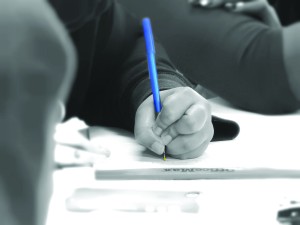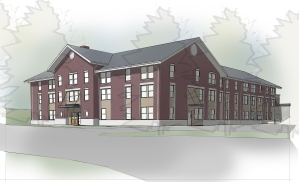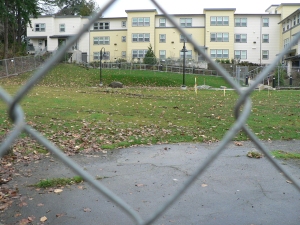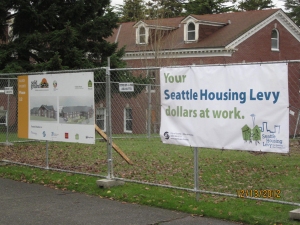For families living on low incomes that include an adult with disabilities, affordable housing can be nearly impossible to find, let alone keep. Many times, families rely on fixed income, essentially living “from crisis to crisis,” according to Sand Point Housing Residential Services Manager Tamara Brown.
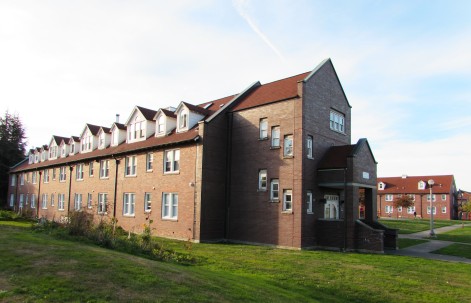
In 2016, these transitional housing units at Sand Point Housing will be converted into Permanent Supportive Family Housing.
By February 2016, Solid Ground will have converted 26 transitional housing units at our Sand Point Housing campus to Permanent Supportive Housing to help address the needs of chronically homeless families. This conversion is in line with the Housing First strategy, which simply put, provides homes to people experiencing homelessness before addressing any addiction problems, criminal records, or other barriers they may have to accessing affordable housing.
“The idea is to stabilize the family first,” says Brown. “Then we look at the barriers and try to help the family address them. The program will make it easier for families to obtain and maintain housing.”
Housing First has not only been more effective in terms of keeping people housed, but it is also more cost effective. Solid Ground’s program differs from similar ones by providing homes to chronically homeless families, rather than individuals.
Sand Point’s new Permanent Supportive Housing units will have very low screening requirements, meaning that those with poor credit, substance abuse or mental health conditions, or past eviction, domestic violence or criminal histories will not be denied housing.
Brown explains that providing people in dire situations with immediate access to housing allows them to actually focus on recovery and stability. Once people have their basic needs met, they can begin to consider making changes that will improve their quality of life. “What many people don’t understand is that people don’t choose to be homeless – rather, they give in to being homeless … because it’s their best option right now, rather than living with domestic violence, dealing with untreated serious mental illness or addiction, or struggling with a limited income that won’t pay for an apartment. It’s the lack of choices that causes them to remain outside.”
As a result of the lower screening requirements, family members may require more support and access to services such as financial counseling, therapy and medical attention. In response to this predicted need, a Therapeutic Case Manager, trained to address the needs of the tenants, will offer support to residents, and case management staff will provide 24/7 coverage. Additionally, other Solid Ground programs and community supports will be available to provide a holistic array of services to residents.
Before the units open, a lot of work must be completed. Brown explains that families currently in the transitional Sand Point Family transitional housing units will be moving out, though each of them entered the program knowing that it was a 12-month, time-limited transitional program, designed for families to exit to permanent housing as they stabilized.
“There are a couple families who will have been here less than 12 months, but we are working really hard with them,” says Brown. “We sat down with all the families individually to figure out how to comfortably transition them into new housing.”
Once these families successfully find housing, the two buildings will be lightly renovated to meet the needs of the incoming families. For example, one of the transitional housing units will be converted into a community meeting space, in order to foster a supportive environment and communication between neighbors.
Units will be posted on Family Housing Connection in the next couple of weeks, and referrals will be accepted beginning at the end of November.
Filed under: Housing | Tagged: ending homelessness, Family Homelessness, Housing First, Sand Point Housing | Leave a comment »














